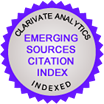Abstract
Metals in Neurological Disorders: From Essential Functions to Toxicity, Epidemiology, and Therapeutic Prospects for Brain Health
Singirisetty Triveni , Sanga Vaishnavi
, Sanga Vaishnavi , Boya Nithish Sharan
, Boya Nithish Sharan , Kondreddy Raghavi
, Kondreddy Raghavi , Cheekati Ramesh
, Cheekati Ramesh , Bille Gayathri
, Bille Gayathri and Chilamakuru Naresh Babu*
and Chilamakuru Naresh Babu*
DOI : http://dx.doi.org/10.13005/ojc/410119
Abstract:
This review examines the intricate interplay between metals and neurological disorders, highlighting their essential biological roles while addressing toxicity risks. It explores macro-minerals and micronutrients, emphasizing the "exposome" concept, which encompasses lifelong metal exposure. A significant focus is on manganese (Mn), which exemplifies the dual nature of metals as both essential and neurotoxic. The review discusses recent advancements in understanding Mn-induced neurotoxicity, supported by epidemiological and clinical evidence linking Mn exposure to neurodevelopmental and neurodegenerative disorders, including Alzheimer’s, ALS, autism, schizophrenia, and ADHD. Challenges in studying metal alterations in neurological diseases are highlighted, underscoring the need for advanced imaging techniques to elucidate brain metal biochemistry. The review calls for multidisciplinary research integrating artificial intelligence and emerging technologies to bridge knowledge gaps on chronic low-dose metal exposures and long-term neurological effects. Ultimately, it advocates for stringent monitoring and targeted interventions to mitigate metal-associated neurotoxicity.
Keywords:Environmental Exposome; Manganese exposure; Metals; Neurological disorders; Neurodegenerative diseases; Neurotoxicity
Back to TOC









